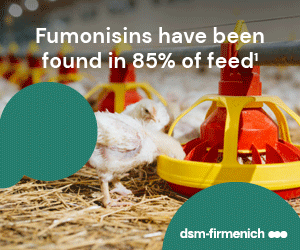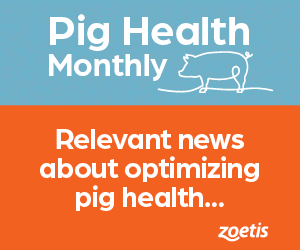



Analysis of Antimicrobial Data Confirms Human-Animal Link
EU - The use of some antimicrobials in animals and humans will lead to resistance to these antimicrobials in bacteria from animals and humans.A new study by the European Food Safety Authority (EFSA) shows that there are also important differences in the consumption of antimicrobials in animals and in humans between European countries.
This first integrated analysis of data from humans, animals and food in Europe published jointly by the European Centre for Disease Prevention and Control (ECDC), EFSA and the European Medicines Agency (EMA) also identifies data limitations that need to be addressed to allow further analysis and conclusions to be drawn.
These include additional data on antimicrobial consumption by animal species, data on antimicrobial consumption in hospitals in more European countries and monitoring of resistant bacteria in the normal flora from both healthy and diseased people.
The strongest associations between consumption and resistance in food-producing animals were found for the antimicrobials studied in relation to indicator Escherichia coli. Positive associations were also noted for Salmonella spp. and Campylobacter spp.
A positive association was observed between the total consumption of 3rd- and 4th-generation cephalosporins in humans and the occurrence of resistance to 3rd-generation cephalosporins (the cephalosporin used for the susceptibility testing) in E. coli from humans.
A positive association was also observed between the total consumption of fluoroquinolones in humans and the occurrence of fluoroquinolone resistance in E. coli from humans.
No association was found between the consumption of fluoroquinolones in humans and the occurrence of fluoroquinolone resistance in Salmonella spp., S. enterica subsp.enterica serovar Enteritidis and serovar Typhimurium from cases of human infection.
For both cephalosporins and fluoroquinolones, positive associations were found between occurrence of resistance in indicator E. coli originating from food-producing animals and the occurrence of resistance in E. coli from humans.
No associations were observed between the consumption of 3rd- and 4th-generation cephalosporins in food-producing animals and the occurrence of resistance to this sub-class in selected bacteria from humans.
No associations were observed between the consumption of fluoroquinolones in food-producing animals and the occurrence of resistance in Salmonella spp. and Campylobacter spp. from cases of human infection.
Positive associations were noted for consumption of macrolides in food-producing animals and the occurrence of resistance in Campylobacter spp. from cases of human infection, and for consumption of tetracyclines and the occurrence of resistance in Salmonella spp. and Campylobacter spp.
The ECDC/EFSA/EMA report on the integrated analysis of the consumption of antimicrobial agents and occurrence of antimicrobial resistance in bacteria from humans and food-producing animals was carried out at the request of the European Commission and combines data from five European monitoring networks that gather information from the European Union (EU) Member States, Iceland, Norway and Switzerland.
This holistic approach aims to make better use of the existing data and thus strengthen coordinated surveillance systems on antimicrobial consumption and antimicrobial resistance in human and veterinary medicine, and to allow policy makers to decide on the best way to tackle antimicrobial resistance in humans and animals.
The joint report will inform the European Commission’s action plan against the rising threats from antimicrobial resistance. The data will also contribute to establishing strong methodologies and priorities in the fight against the development of antimicrobial resistance.
This is the first in a series of reports that EMA, EFSA and ECDC are planning to publish based on the data collected by various monitoring networks.
Access to accurate data on the use of antimicrobials and the occurrence of antimicrobial resistance is an essential step to develop and monitor policies that minimise the development of resistance and keep antimicrobials effective for future generations.
















